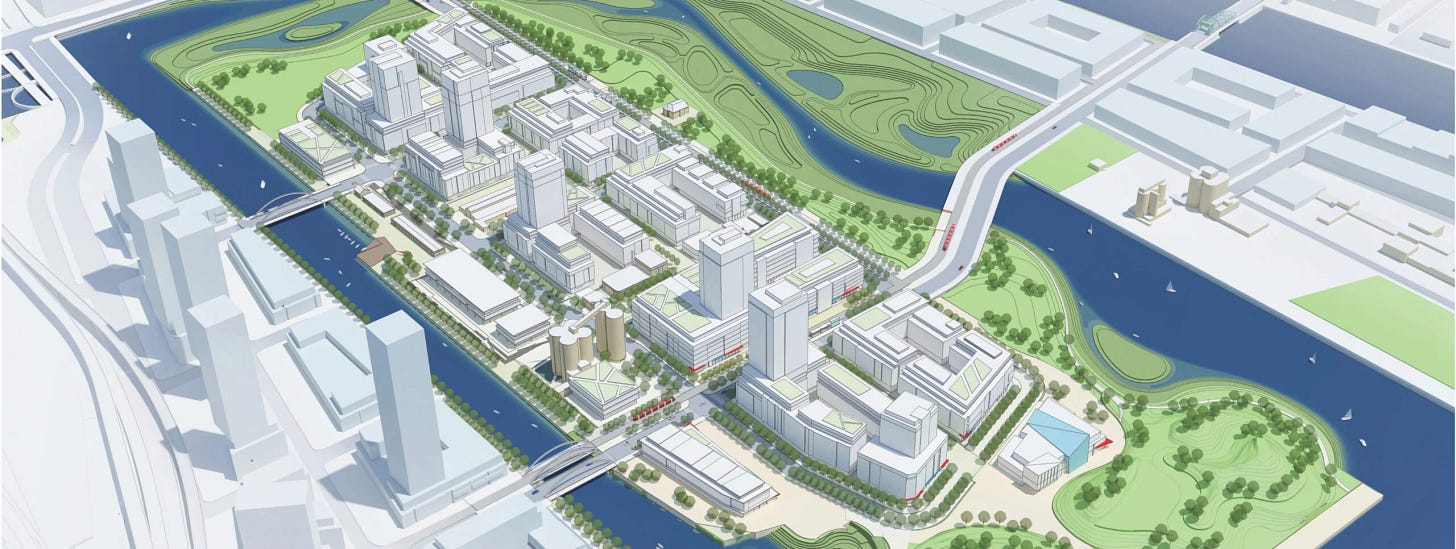Toronto's PATH to Micromobility
An outlook on Toronto's future of human-centric infrastructure and sustainable transportation from a passionate cyclist and pedestrian.

How we navigate and commute through our urban spaces shapes our well-being and connection to our communities.
Living in downtown Toronto since my early 20s, owning a car was both unnecessary and unaffordable. I embraced walking and biking as my main modes of transportation, staying fit while immersing myself in this uniquely Canadian concrete jungle.
Exploring a Cultural Mosaic
Toronto’s downtown core is a vibrant tapestry of cultures and cuisines, representing one of the most multicultural cities in the world. The city’s relative flatness, with a gradual slope rising from the lake northward, makes for pleasant strolls through diverse neighbourhoods with distinct flavours, bustling street festivals, and a wide variety of languages.
However, Toronto is lacking a signature pedestrian walkway, a hallmark of many world-class cities. Iconic spaces like Barcelona’s La Ramblas, New York City’s High Line, and Copenhagen’s Strøget are inspiring urban gems that enhance walkability and cultivate memorable experiences, solidifying them as cultural landmarks over time. And crucially, these spaces prioritize pedestrian safety—an urgent need here in our city, as underscored by a recent study: between 2016 and 2021, a staggering 9,700 pedestrians sought emergency care due to injuries sustained on the city's streets.
The PATH: Underground ‘Metropolis’
In the absence of a dedicated pedestrian walkway above ground, Toronto does boast an impressive alternative: the PATH, North America’s largest underground pedestrian network. Its 30 km of walkways connect retail, services, and entertainment across 75 buildings concentrated around the financial district, linking civic landmarks like City Hall and Metro Hall with popular attractions such as the Hockey Hall of Fame, Roy Thomson Hall, and Scotiabank Arena.
The PATH, although currently experiencing a slower recovery from the pandemic, remains a vital artery of Toronto’s urban life. As “one of Toronto’s great land-use triumphs”, it showcases the effective integration of transportation, work, and leisure in a dense urban environment. Additionally, it’s especially helpful for commuters sheltering from cold winters and increasingly hot summers.
Future Green Neighbourhoods
A new model of pedestrian-friendly urban planning is emerging on the eastern waterfront; the Villiers Island neighbourhood offers an ambitious vision of an innovative design that incorporates nature and prioritizes pedestrians. Plans for car-free streets and abundant green space, engineered to mitigate flooding events from the Don Valley, demonstrate a commitment to both sustainability and community well-being. This model of infrastructure not only builds resilience to extreme weather but also fosters a stronger sense of community, better equipping Toronto to face the challenges of the 21st century.
Two-Wheeled Commute
An essential approach to urban mobility, cycling has become one of the fastest growing commuting options in Toronto. It’s been my primary way of getting around since I moved here, as it’s often the quickest way to get around the downtown core (when it’s not raining or snowing too much).

The city’s network of bike lanes is quickly expanding, yet safety remains a common concern due to car congestion and ongoing construction. Some routes lack full continuity, forcing cyclists to navigate a pathwork of dedicated lanes and shared roads, often marked with potholes. I've grown accustomed to this over time (and experienced a few close calls—always wear a helmet), but cycling should feel safer and less stressful.
Despite the challenges, the growing popularity of Bike Share, a convenient and accessible option offered by the city, reflects a global trend towards urban mobility. Ridership continues to break records every year, with the system offsetting 12.1 million pounds of CO2 emissions in 2023 alone. This highlights the collective impact of daily sustainable transportation decisions, and I’m excited to see further developments that make cycling here even safer and more accessible.
Elements of a Livable City: Connection, Resilience, Safety
Engaging more intimately with our built environment can nurture deeper connections within our communities. However, established car-centric infrastructure presents a significant obstacle for Toronto—it pollutes our air, endangers lives, and fragments our urban fabric. To build a healthier, inclusive, and more connected city, we must shift our urban planning and infrastructure development focus towards people.
To address the crisis of pedestrian traffic deaths, Toronto’s Vision Zero Plan introduced in 2016 aims to eliminate traffic-related fatalities and serious injuries. Working in coordination with various advocacy groups, the plan is making strides towards a safer and more walkable city through redesigned intersections, red-light cameras, improved signaling systems, and expanded bike lanes.
Shifting the Focus: Prioritizing People Over Cars
While the TTC faces ongoing challenges, promising public transit developments like the Ontario Line construction are much needed and will help fill widening transit gaps caused by increasing car congestion. In addition, the rise of micromobility, particularly low-carbon options like e-bikes and e-scooters, offers an effective and sustainable solution for navigating the vast distances inherent in the Greater Toronto Area’s infrastructure.
Enhanced mobility is key to revitalizing the downtown core, which continues to recover from the pandemic. A thoughtful, human-centred approach to urban planning, backed by strong political will, is essential for achieving a more livable and affordable city. This means prioritizing cleaner air, universal accessibility, reduced transportation costs, quieter streets, and a significant decrease in greenhouse gas emissions.
Furthermore, enhancing walkability and bikeability can combat the growing epidemic of loneliness in Canada. Creating more walkable, bikeable, and transit-friendly cities fosters chance encounters, community interactions, and a greater sense of belonging, thus addressing both physical and social well-being.





